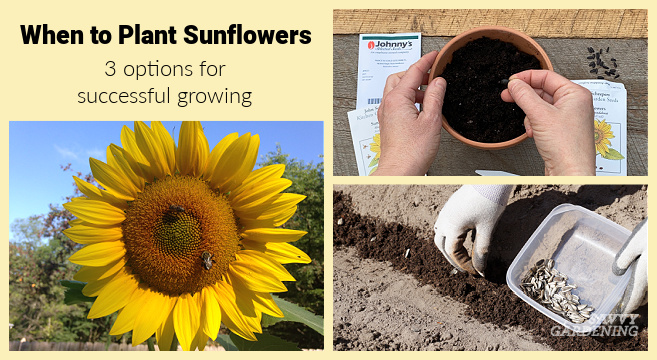Choosing the Right Sunflower Variety for Your Garden
With over 70 known sunflower varieties, selecting the right one for your garden can be a daunting task. However, by understanding the different types of sunflowers, you can make an informed decision and set yourself up for success. Dwarf sunflowers, such as ‘Teddy Bear’ or ‘Joker’, are perfect for small gardens or containers, growing to be around 2-3 feet tall. Tall sunflowers, like ‘Mammoth’ or ‘Velvet Queen’, can grow up to 12 feet high, making them ideal for creating a dramatic backdrop. Pollinator-friendly sunflowers, such as ‘Buttercream’ or ‘Sungold’, are a great choice for gardeners looking to attract bees and butterflies. When learning how to plant a sunflower, it’s essential to consider factors such as climate, soil type, and available space. For example, if you live in a region with hot summers, look for heat-tolerant varieties. If you have limited space, dwarf sunflowers may be the way to go. By selecting the right sunflower variety, you’ll be well on your way to growing a thriving and beautiful garden.
Preparing the Soil for Sunflower Success
Before learning how to plant a sunflower, it’s essential to prepare the soil to create a sunflower-friendly environment. Sunflowers thrive in well-draining, fertile soil with a pH between 6.0 and 7.0. To test the pH level of your soil, use a soil testing kit or send a sample to a laboratory for analysis. If your soil is too acidic or alkaline, add organic matter such as compost or well-rotted manure to adjust the pH. Remove any debris, rocks, and weeds from the soil to prevent competition for nutrients and water. Till the soil to a depth of 12-18 inches to loosen and aerate it, making it easier for sunflower roots to grow. Add a 2-inch layer of compost or well-rotted manure to the soil to provide nutrients and improve its structure. Mix the compost or manure into the soil well, taking care not to compact it. By preparing the soil properly, you’ll be giving your sunflowers the best possible start in life, and setting yourself up for success when learning how to plant a sunflower.
How to Sow Sunflower Seeds for Optimal Growth
When learning how to plant a sunflower, it’s crucial to sow the seeds correctly to ensure optimal growth. Start by selecting a location that receives full sun and has well-draining soil. Sow the seeds 1 inch deep and 6 inches apart in late spring or early summer, when the soil has warmed up to at least 60°F. Plant the seeds in a grid pattern, rather than in rows, to allow for better air circulation and sunlight penetration. Water the soil gently but thoroughly after planting, and keep the soil consistently moist during the first few weeks after sowing. As the seedlings emerge, thin them out to 12-18 inches apart to prevent overcrowding. When learning how to plant a sunflower, it’s essential to provide the right conditions for germination, including adequate moisture, warmth, and light. By following these steps, you’ll be well on your way to growing healthy and thriving sunflowers.
Providing the Right Conditions for Sunflower Growth
After learning how to plant a sunflower, it’s essential to provide the right conditions for optimal growth. Sunflowers require full sun to produce well, so choose a location that receives direct sunlight for at least 6 hours a day. The ideal temperature for sunflower growth is between 65°F and 95°F, making them a perfect crop for warm weather. Water your sunflowers deeply once or twice a week, depending on weather conditions. Aim to provide about 1 inch of water per week, either from rain or irrigation. Mulching around the base of the plants can help retain moisture and suppress weeds. Sunflowers are relatively drought-tolerant, but consistent moisture will promote healthy growth and blooming. By providing the right conditions, you’ll be rewarded with tall, healthy sunflowers that will brighten up your garden and provide a bountiful harvest.
Supporting Your Sunflowers as They Grow
As sunflowers grow, they can become top-heavy and prone to wind damage. To prevent this, it’s essential to provide support for your plants. For tall sunflower varieties, install stakes or cages around the plants when they are about 12 inches tall. Use soft ties or twine to secure the stems to the stakes, taking care not to constrict the plant. For shorter varieties, you can use tomato cages or trellises to provide support. When learning how to plant a sunflower, it’s crucial to consider the mature size of the plant and plan accordingly. By providing support, you’ll be able to enjoy your sunflowers without worrying about them toppling over in the wind. Additionally, supporting your sunflowers will encourage them to grow upright and produce more blooms. With a little extra care, you’ll be rewarded with a stunning display of sunflowers that will brighten up your garden.
Pest and Disease Management for Healthy Sunflowers
When learning how to plant a sunflower, it’s essential to consider the potential pests and diseases that can affect these plants. Common pests that target sunflowers include aphids, whiteflies, and spider mites. To manage these pests, use organic methods such as introducing beneficial insects, spraying soapy water, or using neem oil. For more severe infestations, consider using integrated pest management strategies that combine physical, cultural, and biological controls. Regularly inspect your plants for signs of pests or diseases, and take action promptly to prevent the problem from spreading.
Diseases that can affect sunflowers include powdery mildew, downy mildew, and rust. To prevent these diseases, ensure good air circulation around your plants, water them at the base rather than getting the leaves wet, and remove any infected leaves or stems. If you do encounter disease issues, use fungicides as a last resort, and always follow the instructions carefully. By being proactive and monitoring your plants regularly, you can minimize the risk of pest and disease problems and enjoy a healthy and thriving sunflower crop.
Encouraging Blooms and Enjoying Your Sunflower Harvest
To encourage blooming and maximize your sunflower harvest, it’s essential to provide your plants with the right conditions. One way to do this is by deadheading, or removing, spent blooms to encourage the plant to produce more flowers. You can also fertilize your sunflowers regularly to promote healthy growth and blooming. When learning how to plant a sunflower, it’s crucial to consider the importance of fertilization in promoting blooming.
Once your sunflowers have bloomed, you can enjoy them in a variety of ways. Cut the stems at an angle, and place them in a vase with fresh water to create a beautiful arrangement. You can also use sunflowers as a decorative element in your garden, or as a natural bird feeder. To dry sunflowers for later use, simply hang them upside down in a warm, dry place. With proper care and attention, your sunflowers will provide you with a bountiful harvest of beautiful blooms.
Troubleshooting Common Sunflower Growing Issues
When learning how to plant a sunflower, it’s essential to be aware of common problems that can arise during the growing process. One common issue is weak stems, which can be caused by inadequate sunlight or water. To prevent weak stems, ensure your sunflowers receive at least six hours of direct sunlight per day and water them deeply once or twice a week. You can also provide support using stakes or cages to help the plants grow upright.
Yellowing leaves can be a sign of overwatering or underwatering. Check the soil moisture by inserting your finger into the soil up to the knuckle. If the soil feels dry, it’s time to water. If the soil feels damp, wait a day or two before watering again. Pests like aphids, whiteflies, and spider mites can also cause yellowing leaves. Use organic pest control methods like neem oil or insecticidal soap to control infestations.
Other common issues include powdery mildew, downy mildew, and rust. These diseases can be prevented by providing good air circulation, watering at the base of the plant, and removing infected leaves or stems. If you do encounter disease issues, use fungicides as a last resort, and always follow the instructions carefully. By being proactive and monitoring your plants regularly, you can minimize the risk of common sunflower growing issues and enjoy a healthy and thriving crop.







